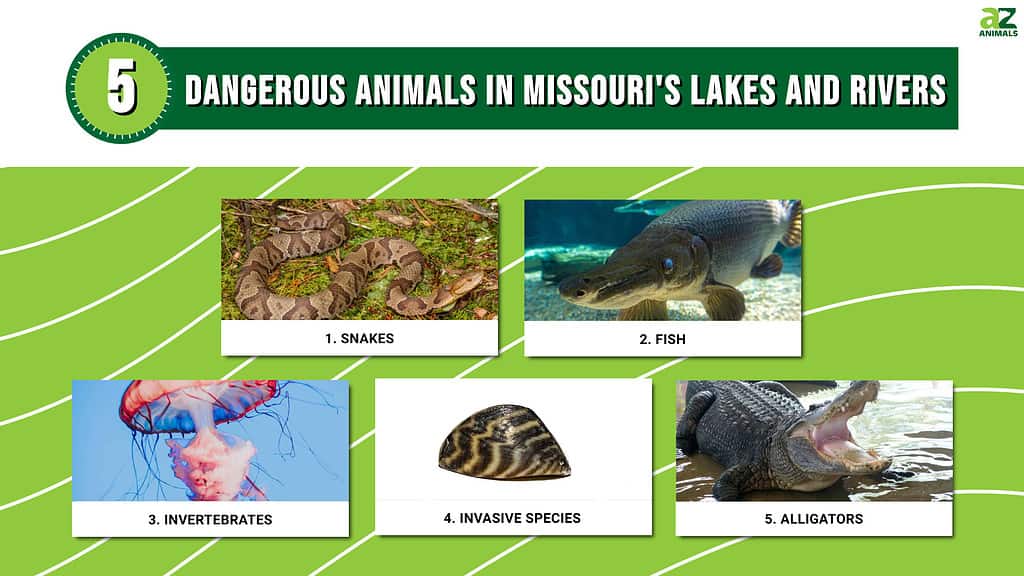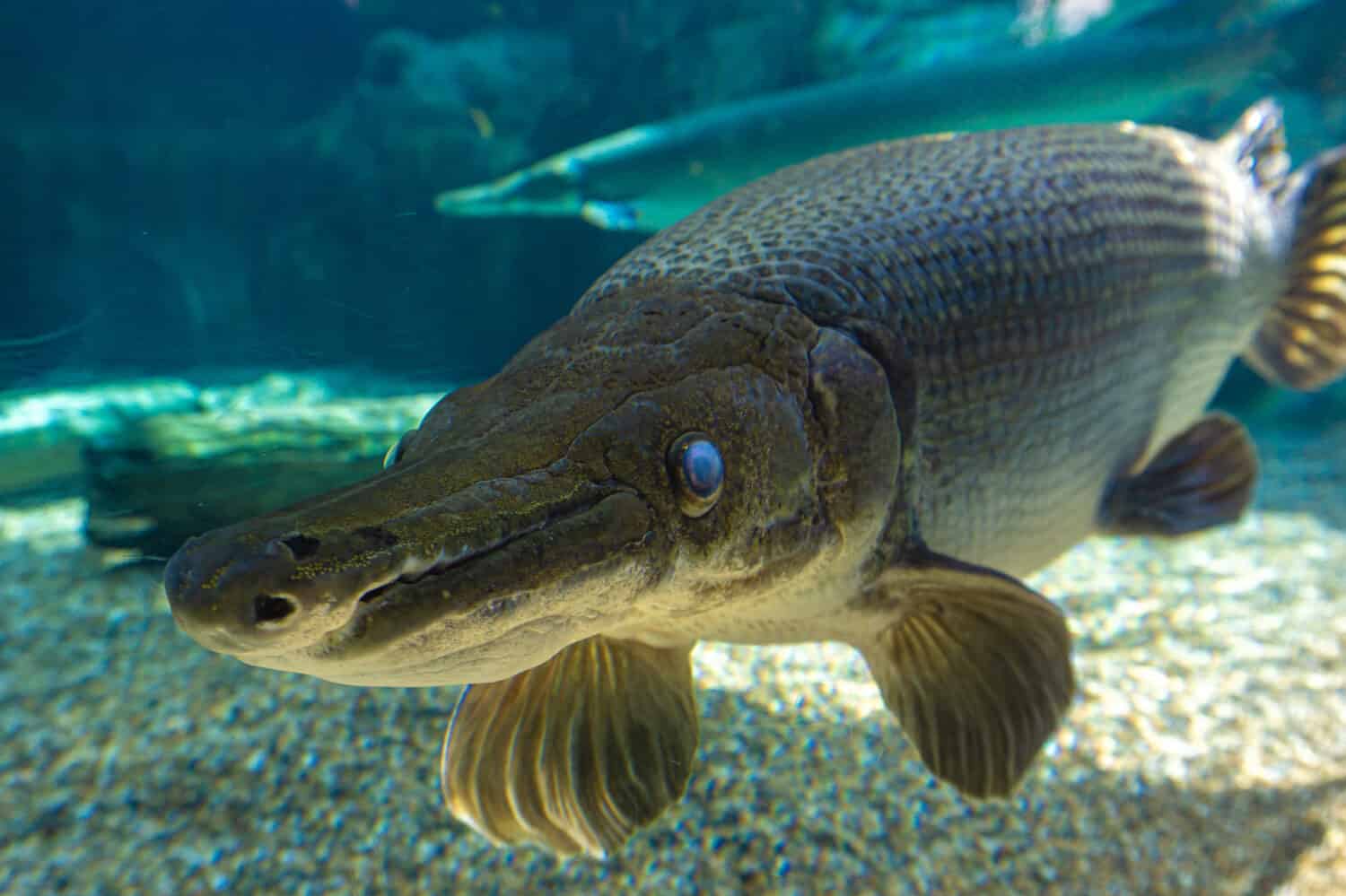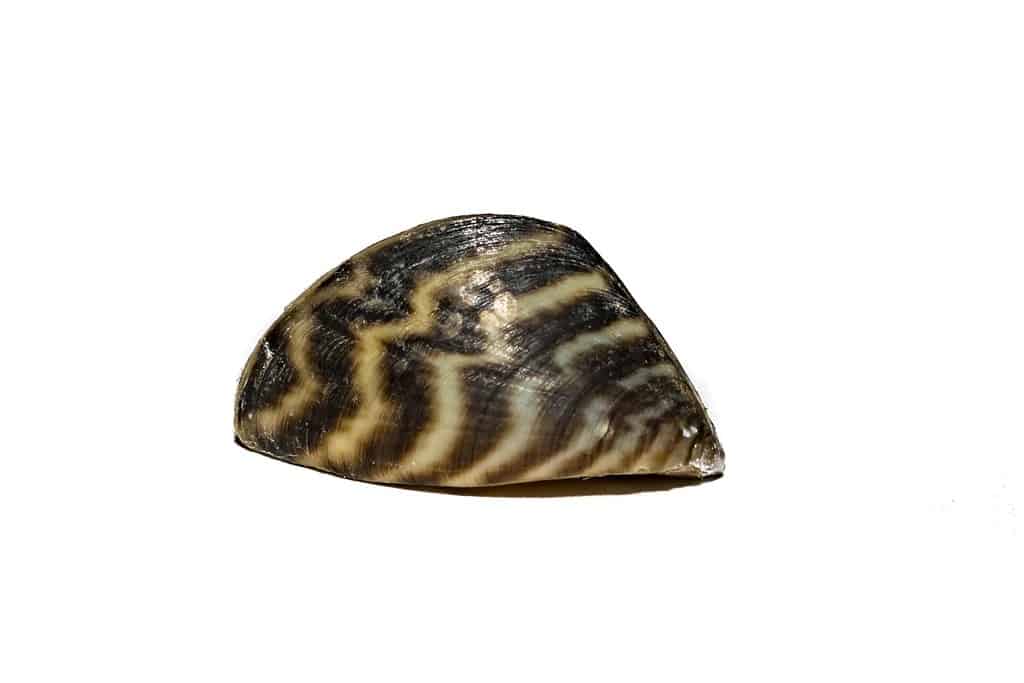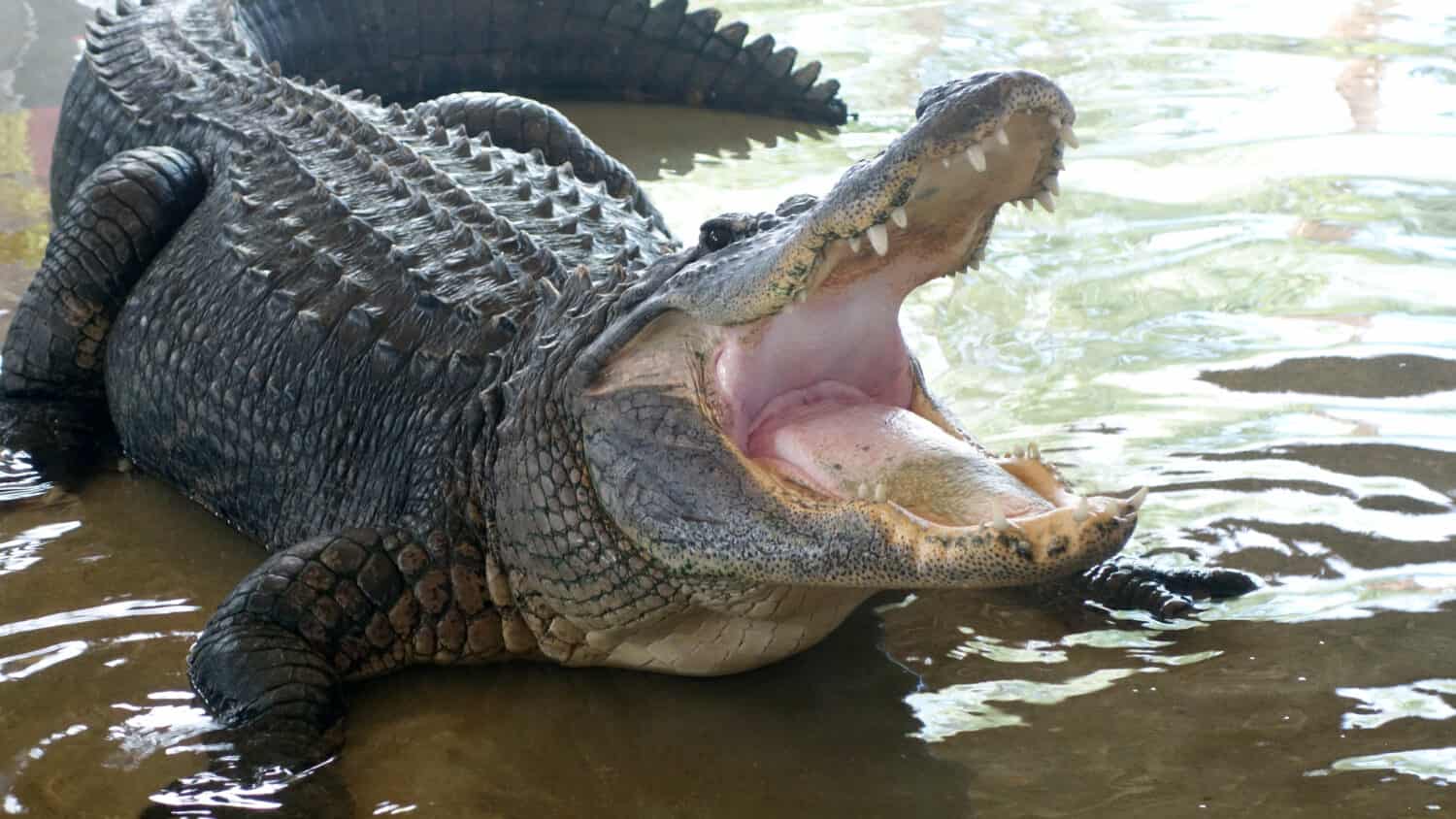Did you know that there are dangerous animals found in Missouri’s rivers and lakes? However, these water bodies are some of nature’s finest gems, offering an abundance of outdoor activities such as fishing, boating, and swimming, all while surrounded by the beautiful Ozark Mountains or overlooking the grandeur of the Mississippi River. These beloved waterways provide locals and tourists with endless hours of enjoyment.
At the same time, it’s crucial that you stay mindful of the potential danger lurking beneath Missouri’s lakes and rivers. The venomous snakes, sharp-toothed fish, and other harmful invertebrates could pose a risk while you spend time in the water. Invasive species also exist in this beautiful ecosystem. Nonetheless, don’t let this stop you from experiencing all the breathtaking sights these majestic waters offer!
Changing water levels, currents, and weather conditions can significantly impact an animal’s behavior or movement patterns, so staying informed of such changes is paramount to mitigating risks.
This article will provide an in-depth exploration of the hazardous animals lurking in Missouri’s lakes and rivers. We’ll expose their habitats, behaviors, and how they can be dangerous to humans. Hopefully, by the end of this article, you’ll be able to ensure that your safety and those around you are not compromised. Without further ado, let’s get right into it.

1. Snakes: Venomous Serpents in the Water
While exploring Missouri’s lakes and rivers, stay cautious of the venomous copperheads and water moccasins, otherwise known as cottonmouths. These creatures can be hazardous due to their poisonous bite.
Copperheads, a type of venomous pit viper with a distinct copper-colored head and an hourglass pattern across its body, can be found in numerous habitats ranging from woodlands to grassy plains near the banks of rivers or lakes.
Copperheads may be more timid but can bite if they feel endangered or trapped. Water moccasins are usually darker with a thick build and broad head. They typically lurk around wetlands, marshes, riversides, lakeshores, and other aquatic habitats; however, water moccasins tend to act more aggressively than copperheads and can become defensive when approached or agitated.
Beware of copperheads and water moccasins; their bites are dangerous for humans. Effects from the venom may include swelling, pain, or tissue damage in worse cases. It is especially risky if a person has an allergy to the venom or gets bitten by one of these giant snakes; it can be life-threatening!
Never reach into crevices or underneath rocks to avoid coming face-to-face with a snake in Missouri’s lakes and rivers. Pay attention to where you step when wading ashore or near water. If, by any chance, you come into contact with a snake, keep your distance and avoid handling or provoking it. Wear closed-toe shoes or boots to maximize your safety when visiting places with a high snake population.
If you get bitten, try not to overreact in panic; stay calm and seek medical assistance as soon as possible. DO NOT carry out outdated and ineffective techniques such as tourniquets or sucking out the venom. These can worsen the situation and put your safety at greater risk. Instead, keep still and look for immediate medical assistance.

The copperhead snake is a venomous reptile found throughout many parts of the United States.
©JacobLoyacano/Shutterstock.com
2. Fish: Beware of Sharp Teeth and Poisonous Fins
Missouri’s streams and lakes house a variety of fish species, some of which can be hazardous to humans. Remember to stay vigilant as you enjoy your aquatic escapades in this state.
One of the most feared fish in Missouri is the alligator gar, a species that can grow up to several feet long and boasts pointed teeth. This aquatic creature lives primarily in southern waters, and while it isn’t known for attacking humans, mishandling or agitating them could result in severe wounds from its sharp jaws.
Therefore, if you ever come in contact with an alligator gar — whether fishing it out or trying to release it back into its home — be sure to exercise extreme care; otherwise, these creatures’ powerful mouths may leave you with more than just memories!
When it comes to fish, be careful with blue and flathead catfish. These aquatic creatures possess venomous spines on their dorsal and pectoral fins that can bring about some uncomfortable effects when touched. Painful swelling, redness, and aching are some of the symptoms associated with these stings — though more severe reactions have also been observed in rare cases.
As such, always remember to handle catfish cautiously, steering clear of those poisonous spikes whenever possible (and wearing protective gear when handling them).

The alligator gar is one of the largest freshwater fish in North America, growing up to 10 feet in length.
©TKBackyard/Shutterstock.com
3. Invertebrates: Tiny but Mighty
Missouri’s waters are home to one of the most notorious invertebrates: the freshwater jellyfish. These small, transparent bell-shaped animals may deliver a stinging sensation that causes burning and redness; however, while they can be uncomfortable, their sting is not usually dangerous, and symptoms tend to vanish within several hours. To reduce your odds of getting stung by these critters when swimming in lakes or rivers, avoid clusters of them or think about wearing protective clothing.
Beware of crayfish — these crustaceans have powerful pincers that can easily cause pain and injury, especially to toes or fingers. Although the bite isn’t usually dangerous, a secondary infection could develop if you don’t properly clean and treat any wounds caused by them.
Freshwater snails are another potential risk. These invertebrates can carry schistos, which is a dangerous parasite that causes schistosomiasis.
This illness can cause irreversible and even organ damage if not treated properly. To prevent its spread, stay on high alert when swimming or wading in still bodies of water where these snails are particularly prevalent. Furthermore, wearing protective footwear such as waterproof shoes is crucial to preventing contact with contaminated water.
Missouri’s waters support a wide array of insects, such as mosquitoes, black flies, and horseflies, that may transmit diseases to humans. While not all species carry viruses, you should still be vigilant when participating in water activities to avoid getting bit. Wearing protective clothing and using insect repellent can also lower the chance of bites while safeguarding against potential ailments.

Missouri is home to freshwater
jellyfish
, which can deliver a stinging sensation that causes burning and redness.
©Swapnil Anghan/Shutterstock.com
4. Invasive Species: A Growing Concern
Invasive species, or non-native plants and animals, gradually damage Missouri’s precious rivers and lakes. They overpower native wildlife for necessary resources, drastically altering habitats and throwing the local food chain off balance, ultimately leading to severe consequences on our fragile ecosystems.
Furthermore, these invasive species can also be dangerous to us through direct contact and consuming contaminated fish. The zebra mussel is one example that has caused destruction in the Great Lakes area, migrating across waterways extensively. This small freshwater mollusk can infiltrate water intake pipes, erode boat hulls, and outcompete native mussels for resources, leaving Missouri’s waters increasingly vulnerable.
The zebra mussel can have a detrimental effect on water quality, as it causes an exponential increase in the growth of algae blooms that are hazardous to both wildlife and humans.
Missourians should be cautious of the Asian carp, an aggressive species that can propel itself out of the water and potentially harm people on boats. Additionally, it competes with local fish for resources and may contain toxic elements if consumed directly. To protect our health and native aquatic life in this region, we must take preventive measures against these invasive fishes.
Taking a few extra moments to practice good hygiene can make all the difference in protecting Missouri’s aquatic ecosystems from invasive species. This includes cleaning and inspecting boats and equipment before and after use, disposing of bait or other materials properly, and not releasing live fish or organisms into water sources. When you take these steps towards prevention, everyone benefits by enjoying safe and enjoyable outdoor activities!

The invasive zebra mussel is a small mollusk that invades and disrupts freshwater ecosystems.
©Jay Ondreicka/Shutterstock.com
5. Alligators: The Silent Killers of the Waters
Alligators are not typically found in the cold climates of Missouri, yet there have been rare sightings of these reptiles here. Typically, gators prefer to live in warm and humid conditions similar to those seen in Louisiana or Florida — so how did they end up roaming our rivers?
Most likely, the alligators in Missouri have escaped captivity or been unlawfully released into nature.
Some people may also decide to keep alligators as pets. On average, these animals are released into the wild when their owners can no longer care for them. Unfortunately, this is not exclusive to domesticated gator populations; countless instances exist where humans transport gators from one place and introduce them to a new environment to establish new colonies.
Although encounters with alligators in Missouri are uncommon, it is helpful to understand the safety measures you should take if one does cross your path. Alligators can become hostile and aggressive when disturbed. Therefore, an ideal way of responding is by maintaining a safe distance between yourself and the animal while giving them ample space.
Moreover, if an alligator appears on open water, steer clear, as they’re surprisingly quick swimmers and runners. When walking near bodies of water, remain alert as gators sometimes approach unsuspecting humans too close for comfort.
Remember that alligators are protected by state and federal rules, making it a criminal offense to harm or kill them without proper licensing. Consequently, if you spot an alligator in Missouri, contact the Missouri Department of Conservation immediately. Even though these creatures may not be regular visitors to our rivers and lakes, we must remain conscious of their potential risks.

Most likely, the alligators in Missouri escaped captivity or were unlawfully released.
©Ernie Hounshell/Shutterstock.com
Staying Safe in Missouri’s Waters
Exploring Missouri’s lakes and rivers is a fun and peaceful experience, but safety must always come first. To guarantee your protection while you’re out on the water, here are some valuable tips:
Familiarize Yourself With Your Environment
Before plunging into the water, take a few moments to survey and analyze the area. Are there any potential hazards like submerged objects or strong currents? Is it wise to swim in an area that has heavy boat traffic? Consider these details carefully before taking a dip.
Wear Your Life Jacket
Securely fasten a fitting and proper life vest whenever you’re out boating, angling, or swimming in open water. A flotation device can keep your head above the waves and be lifesaving in urgent situations.
Keep Your Distance From Unfamiliar Animals
Getting close to or touching an animal in the water can be alluring, yet it’s critical to stay far away from unpredictable creatures you don’t know. Snakes, fish, and other aquatic lifeforms may pose a hazard if approached without caution.
Exercise Caution When Dealing With Aquatic Animals
Catfish and other fish species have sharp spines that can inflict nasty stings, so it’s best to take precautionary measures. For example, wear gloves before you attempt to handle any seafood. Doing this will help ensure your safety while preventing harm to the aquatic creature.
Respect Local Regulations and Guidelines
Obey posted signs and heed any safety recommendations from lifeguards or park rangers to ensure a safe water experience. Stay alert, as local authorities may have detailed policies for your well-being.
Hydration Is Key
When engaging in outdoor activities, especially when it’s warm outside, bring a plentiful water supply and stay hydrated throughout the day. Doing so will help ensure dehydration doesn’t creep up on you while out having fun.
Stay Informed on Weather Forecasts
Weather patterns can shift suddenly, so monitoring imminent storms or extreme weather is essential. If you spot lightning or hear thunder, take cover immediately.
Adhering to these safety measures and staying vigilant of your environment can guarantee a safe yet enjoyable experience at Missouri’s lakes and rivers. At all times, exercise caution when participating in outdoor activities; never chance unnecessary risks that could put yourself or others in peril.
What Healthcare Options Are Available if You Come into Contact with a Dangerous Animal?
Maximize your outdoor experience in Missouri’s lush lakes and rivers by taking all necessary precautions for a safe, entertaining journey. Get lost in nature, but always be aware of potential risks to ensure an enjoyable time outdoors.
In case of an unfortunate attack by dangerous animals in Missouri’s lakes or rivers, it is imperative that you receive medical attention immediately. Depending on the severity of your wound or bite, treatment can vary from basic first aid to hospitalization, with anti-venom medications administered if necessary.
If possible, while engaging in outdoor activities, carry a fully equipped first aid kit with you that includes bandages, disinfectant ointment, and pain medication. In the unfortunate case of being bitten by an animal whose venom could be toxic, keep your cool and seek medical assistance immediately. Missouri boasts numerous hospitals, clinics, and urgent care facilities that provide quality healthcare should any wildlife-related injuries occur.
The Missouri Poison Center is always ready to provide guidance and assistance in the event of a poisoning or bite-related incident. Contact them at any hour at 1-800-222-1222 for advice and support. Nevertheless, let us never forget that prevention remains our ultimate safeguard against dangerous animals.
Being Vigilant for a Safe Experience
Missouri’s lakes and rivers are breathtaking natural wonders that everyone can enjoy. However, we must remember to stay vigilant as there may be hazardous animals lurking below the surface, from venomous snakes to sharp-toothed fish and invertebrates with toxic spines. It is essential to be mindful of potential risks before venturing into any waterbody in this beautiful state.
Being conscious of your environment, steering clear of strange animals, and observing safety regulations can help minimize the likelihood of harm or injury. Moreover, remember to don a life vest when boating or swimming, handle fish and other aquatic beings carefully; and stay hydrated in hot weather conditions.
Maximize your outdoor experience in Missouri’s lush lakes and rivers by taking all necessary precautions for a safe, entertaining journey. Get lost in nature, but always be aware of potential risks to ensure an enjoyable time outdoors.
The photo featured at the top of this post is © iStock.com/NajaShots
Thank you for reading! Have some feedback for us? Contact the AZ Animals editorial team.






